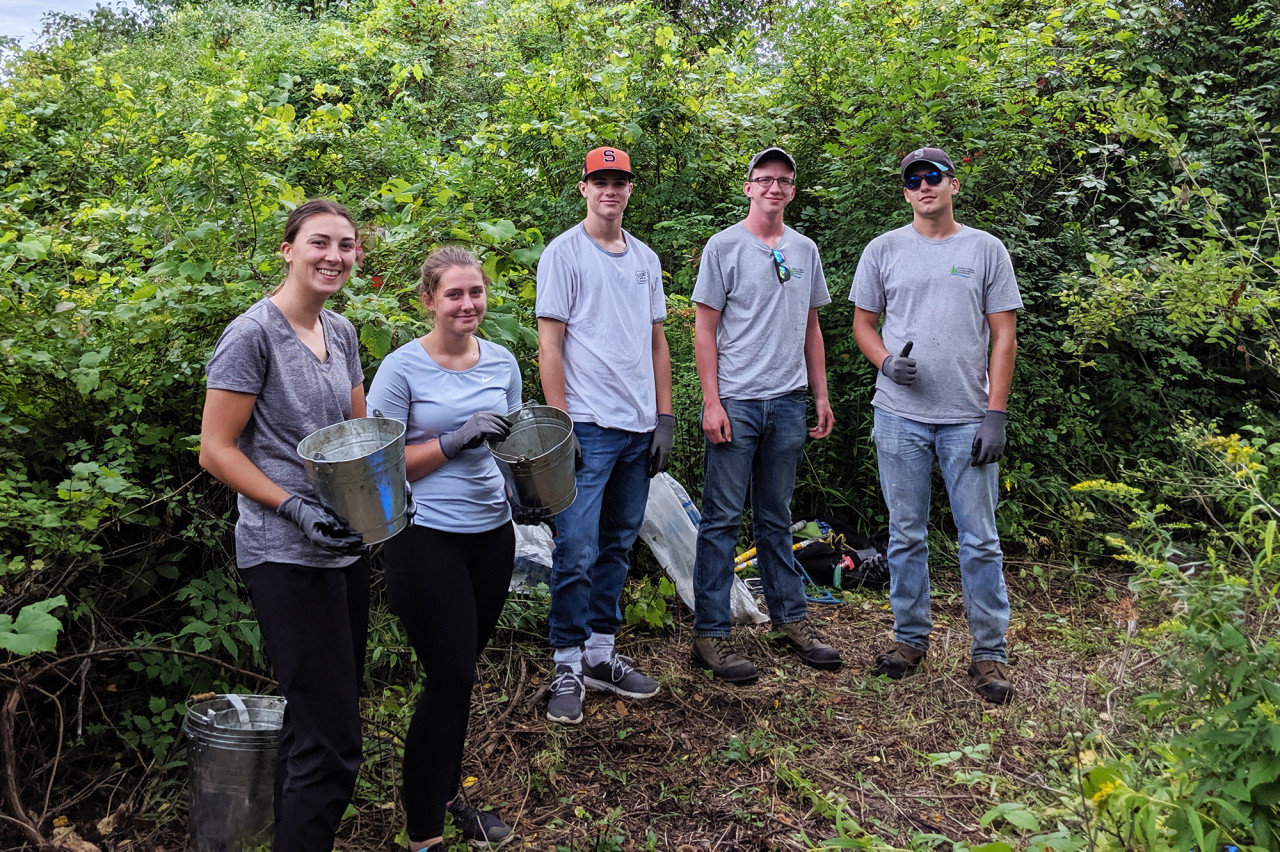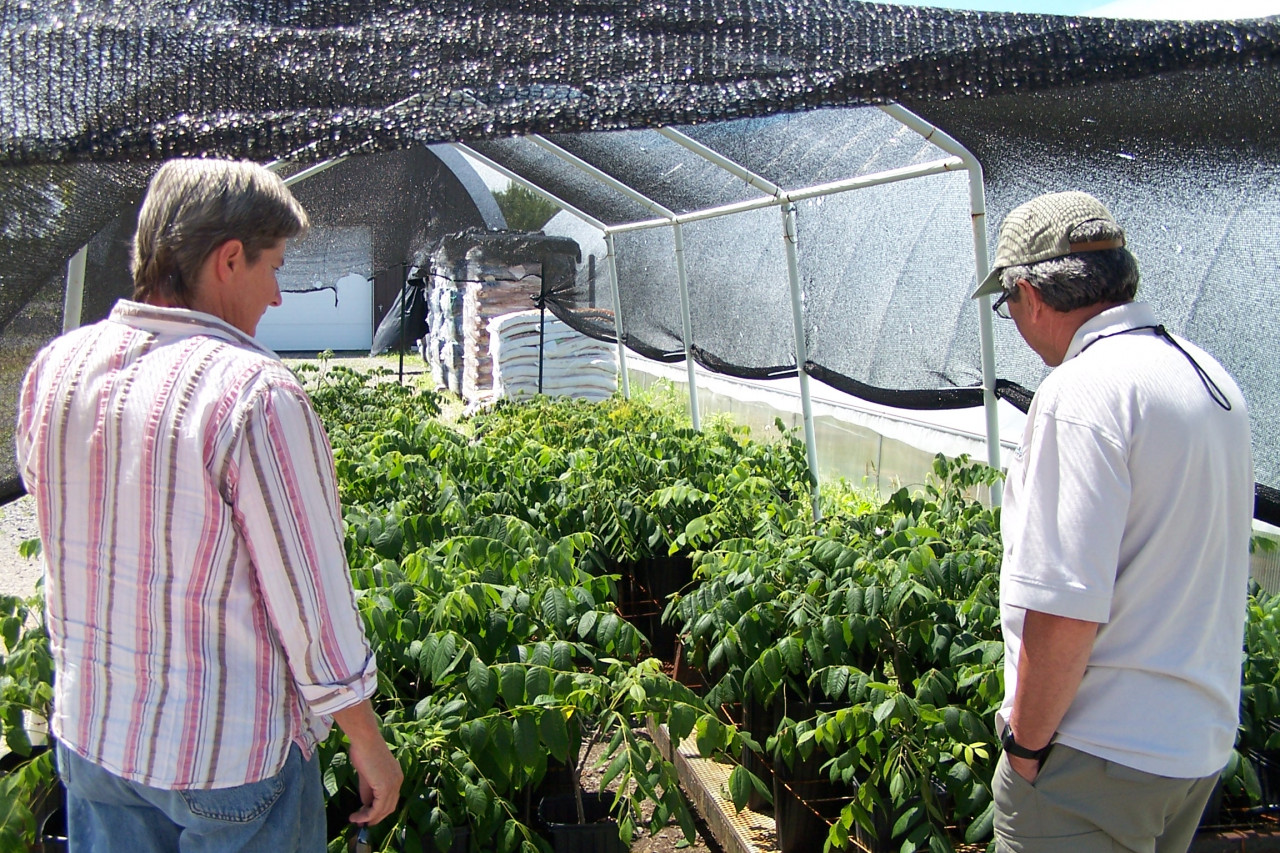Buttressing the butternut: RVCA welcomes federal partnership
When Rose Fleguel first surveyed the Canadian Wildlife Service's butternut population at a federally protected site last year, she was surprised to see so many healthy butternut trees.
As a butternut specialist for more than 16 years, rarely had she seen a population so diverse in age and so many individuals relatively free of the deadly fungal canker disease that has nearly wiped this native nut species off the map.
"In my mind it was just going to be another site where most of the butternuts would be heavily diseased or dead," said Fleguel, who leads the RVCA's Butternut Recovery Program. "But as I surveyed the trees, I began to realize this was an incredibly different site."
The population of 59 butternuts includes a number of young seedlings, young mature trees and two exceptionally large older mature seed trees that are two of the largest trees to be put in the RVCA Butternut Seed Tree database, according to Fleguel.
This kind of naturally-occurring age diversity is very rare in butternut populations in Eastern Ontario, as the canker often kills the seedlings and young trees before they've had a chance to reproduce. CWS was eager to work with the RVCA to manage the population into the future.
"We knew there was some butternut on the site, but they hadn't had a lot of frequent attention. We didn't know how unique the population was," said Graham Howell, the CWS Protected Areas Officer who initiated the partnership. He said species at risk management is part of CWS's mandate. "I'm just thrilled that the RVCA and Rose are willing to work with us to do this work. It's a fantastic combination of incredible value and good work done."
Beginning this spring, Fleguel and her team will collect seeds for off-site regeneration, remove competing vegetation from the area around a number of naturally-occurring seedlings, and plant up to sixty healthy, vigorous seedlings over the next four years. These new seedlings may help fill canopy gaps in the hardwood forest as over-mature hardwoods begin to die or gaps left by CWS's invasive species removal efforts.
"Nature abhors a vacuum, so where we've removed a bunch of buckthorn, for example, we will plant some of RVCA's butternut seedlings there instead if the conditions are right," Howell said.
The seedlings stem from wild parent trees that have shown signs of tolerance to the canker – usually by being the only healthy trees left in an otherwise decimated population. Fleguel works with private and public landowners to locate trees that are showing signs of disease tolerance, collect their seeds, and nurture them into seedlings in partnership with the Ferguson Forest Centre in Kemptville.
The hope is that, by repopulating the landscape with healthy, vigorous seedlings from tolerant parent trees, we can assist the recovery of butternut in the long term. Fleguel's program has already planted more than 30,000 butternuts through this method, with many thriving and surviving in the wild.
Howell said he's excited to continue these efforts on CWS property – especially since it's unclear whether the canker disease will get a stronger toe-hold on the trees in the future. While the population has a low to moderate canker load right now, that story could change.
"We may find ourselves in 8 or 10 years in the same situation as the rest of Eastern Ontario, which is a couple of trees hanging on, with no hope of progeny moving the population forward," Fleguel said. "Managing this CWS population is exactly what we need to do to give those seedlings and those up-and-coming seed trees the space to grow, to produce seed and, for this population to persist into the future."
To learn more about the RVCA's butternut recovery program visit https://www.rvca.ca/stewardship-grants/butternut-recovery.
Along with conservation partners, the program also partners with landowners willing to help repopulate the landscape. See the landowner program in action in the video below:
When you subscribe to the blog, we will send you an e-mail when there are new updates on the site so you wouldn't miss them.




Comments 1
Hi, TILLY DUNN here. My brother, Dr. Pieter Trip, at 1106 County Rd. 2, Maitland, had a property that my husband is the Trustee of, now.
He was a biologist who taught at Yale before he became an MD for Brockville for 20 years. From 2000 to 2021 he was actively expanding his
Arboretum at the back of his 124-acre property. He took special care of his Butternut trees and believed in fertilizing his trees. He put 6000
pounds of fertilizer on his trees every year and they loved his TLC. This is his legacy. I call this place his HEALING FOREST. The trails through
the woods are kept clear.